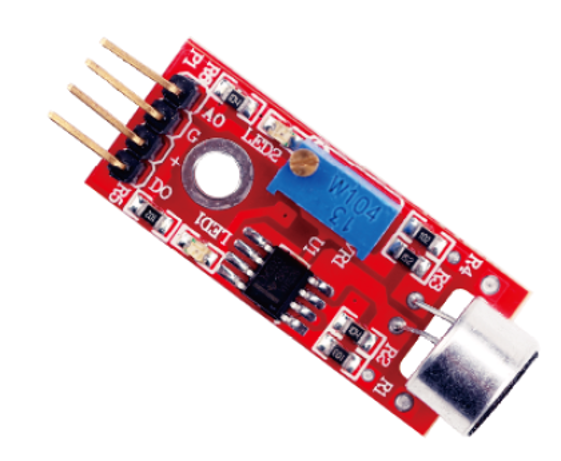Sound Sensor
Background

The sound sensor module is a microphone module that detects sound. It reports that information with both an analog output (providing a voltage reading corresponding to the loudness of the sound) and a digital output (providing a voltage when the noise exceeds a certain threshold). The threshold of the module for the digital output is set by twisting the knob on the potentiometer with a screwdriver. There is an LED indicator that is lit up when the threshold is reached. Another LED is used to indicate that the module is powered.
Hardware Description
Pinout
- AO - analog output, real-time output voltage signal of the microphone
- G - ground
- + - 5V
- DO – digital output, when the sound reaches a certain threshold, drives the output high
- AO would be connected to an analog input on the Arduino to read the analog voltage.
- DO would be connected to a digital pin as INPUT on the Arduino to read the digital voltage (triggered = HIGH, not-triggerd = LOW)
- LED
- Connect LED of your choice to a digital output using a series resistor.
- Other end must be connected to ground to complete the path.
Software Description
- AO (analog output on the module) would be connected to an analog input on the Arduino to read the analog voltage. Read the voltage using analogRead().
- DO (digital output on the module) would be connected to a digital pin as INPUT on the Arduino to read the digital voltage (triggered = HIGH, not-triggered = LOW). Read the state using digitalRead().
- You may use the analog output on the sound sensor module to read the analog voltage value or the digital output on the sound sensor module to read the digital value based on the threshold value set. Whichever best suits your application.